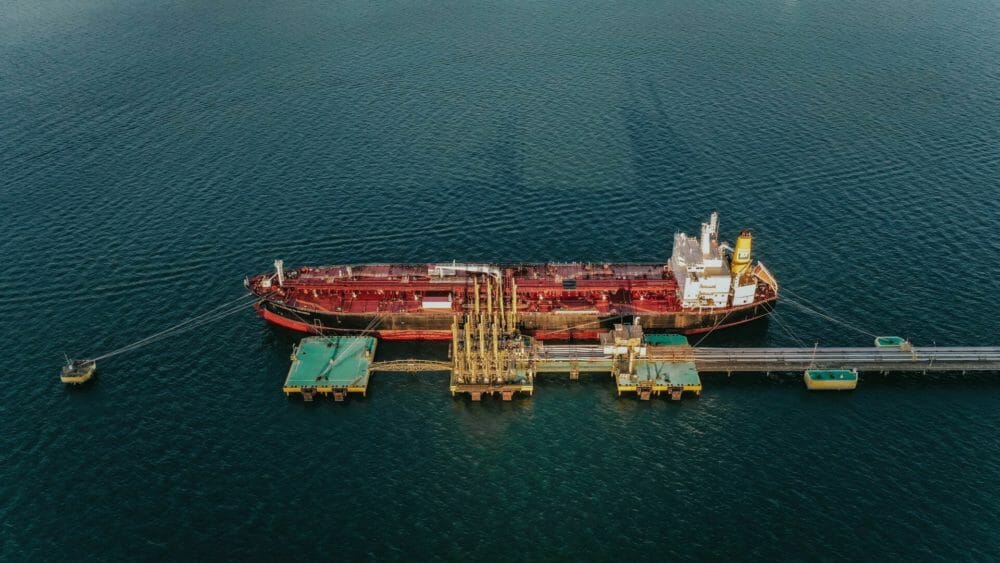A new industry initiative using blockchain technology aims to bring the global grain trading industry into the digital age. As most people who work in the industry seem to say, a step away from antiquation is a much-needed move. But considering the titanic scope of the global commodities training industry, change can’t happen overnight.
Although most people could assume it’s a relatively simple process to load a ship heading for the final destination, there are several steps that have to happen before cargo can even leave the port. This includes accumulating cargo, issuing shipping documents, doing the right inspections, presenting documents for payment, agreeing on a payment channel, and discharging the vessel.
Discussions about finding an industry-led solution to antiquity began in 2018 around the same time that Davos was aflutter with the promise of blockchain.
“This is something that takes a lot of time especially with regulatory authorities involved,” the newly-appointed CEO for Covantis, Petya Sechanova, tells AFN. “The ecosystem is very complex. Most companies involved in this initiative have tried in the past 10 years to promote the use of electronic bills of lading, for example, but the reality is that if the buyer, bank, regulatory agency, customs authorities, and governments are not seeing the value or need for electronic documents then its difficult to have every aligned.”
Covantis is a new entity founded by the world’s largest trading houses, including the ABCDs, ADM, Bunge, Cargill, and Louis Dreyfus Company, as well as China’s COFCO and Switzerland’s Glencore Agriculture. It recently received the required regulatory approvals and incorporation as a legal entity in Geneva, Switzerland.
The platform is not designed to connect buyers and sellers of ag commodities like several agrifood tech startups are doing but is instead aiming to modernize the post-trading process. The partners are building a secure digital platform using Blockchain that will minimize traders’ operating risks while increasing market efficiency for the entire commodities trading and shipping industry. Many operators in the space still rely on paper documents, emails, and Excel files, according to Sechanova.
One of Asia’s largest supply chain companies, Olam, has been reticent to dive into blockchain in the past. Find out more in our interview with its president and group head of strategic investments back in 2018.
Starting with Brazilian grain and oilseed
Convantis will start with a narrow focus: grain and oilseed commodities exported from Brazil. The group hopes to launch its platform midyear. The narrow focus of its initial offering is a testament to the colossal effort that the entire industry faces in terms of modernization.
“If we tried to do everything, we wouldn’t have anything for five to six years. We said let’s first start with the export market in Brazil as one of the largest exporters of agricultural goods along with the US. We have engaged with all those participants that are exporting ag commodities in bulk from Brazil to jointly define the functionalities that will bring value to the industry,” she explains. “We have a roadmap on what we want to enable next.”
The biggest challenge that Covantis faces is gaining enough adoption among global trade partners. For some transactions, there could be 20 to 30 parties involved, Sechanova explains, on top of all the service providers like inspection agencies and banks. Concerns about garnering enough momentum to turn the proverbial tanker ship in a new direction are part of the reason that Covantis is taking a narrowly-focused piecemeal approach to digitization.
“What you are effectively doing is changing the way people are used to operating sometimes for many years. So, it’s a lot of changing management aspects and having to work with users to make them comfortable with a new way of doing things and convincing them that it’s more efficient than what they did before.”
Innovation is finding its way into commodities trading one startup at a time
Covantis is not alone in wanting to make global trading a more streamlined process. Last year, a new international non-profit trade association launched to improve the trading process for the commodities industry called the Global Commodity Technology Association. The group is technology agnostic and, like Covantis, hopes to identify potential innovations based on industry-needs. Founder Julie Lerner sees the value of blockchain but also sees its applicability for global trade as being premature.
“We don’t even have one document that is standardized and ready for digitization,” she told AFN last year. “Today, we can do blockchain but only for PDFs and I question the benefit of that if the destination buyers still demand hard copy documents like a certificate of origins.”
Some startups are looking less at the logistics of making trades happen and finding other ways to apply technology. DecisionNext developed a SaaS platform that provides users with forward-looking views of commodity markets that they can translate into actionable business decisions. It scooped up a $7 million Series A last year.
In India, Arya has developed a warehousing and fintech platform to solve to help Indian farmers avoid selling their grain at the worst time of year — after harvest.
Although some might think that Covantis would be concerned about having multiple efforts at modernization, Sechanova sees the need for multiple groups tackling the incredibly complex global trade system.
“From all the investigation we have done, we have not seen a platform at the moment that has a similar scope as ours. A lot of initiatives on the market are focused on container shipments. We are looking at platforms that we can connect with like groups promoting trade financing services and facilitating the ability to present documents to the banking channel,” she explains. “Obviously we don’t want to create a platform for this ourselves if someone else is doing something. We would probably look at how we can partner with similar systems to create more value.”




